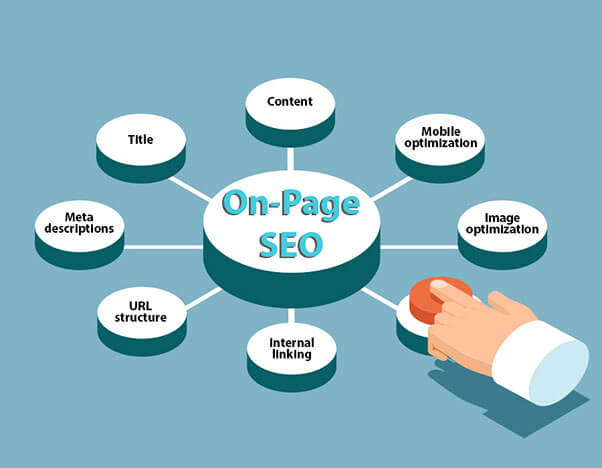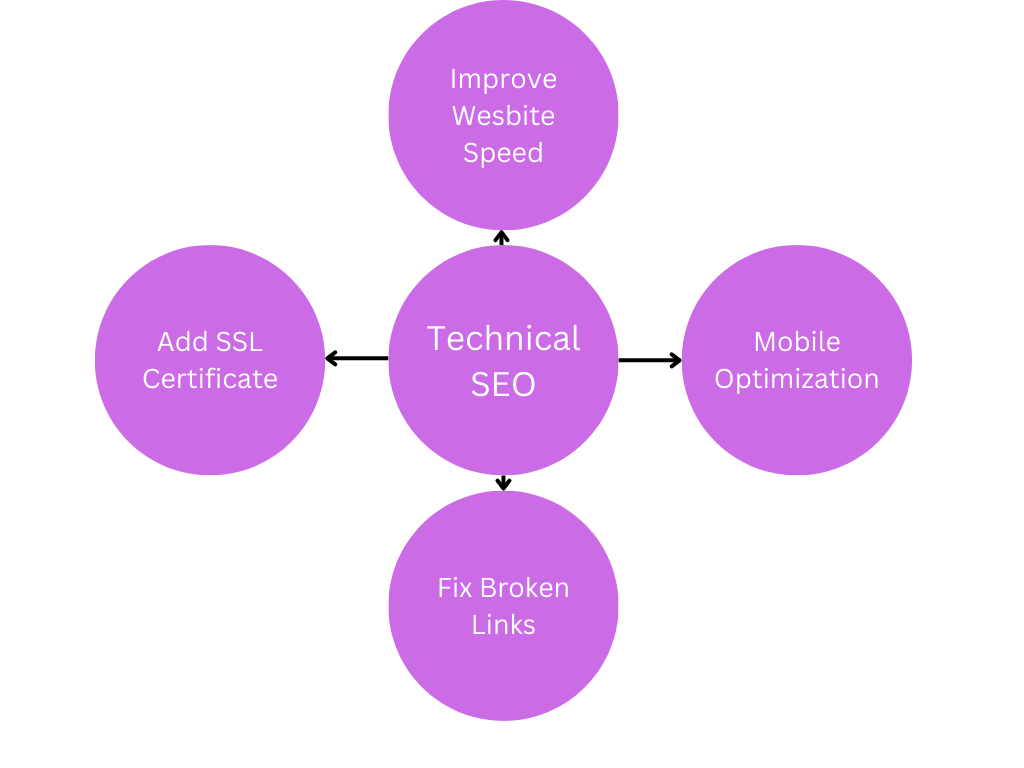SEO basics: A Beginner’s Guide to Ranking Higher on Google for Small Businesses
Introduction
If you’re a small business owner—whether you’re a plumber, pressure washer, home cleaner, or contractor—you know how important it is to be aware of SEO basics in order to be found online. But with so many competitors out there, how do you make sure your business stands out? The answer lies in SEO, or Search Engine Optimization. SEO is the process of optimizing your website so it ranks higher on Google, helping you attract more customers and grow your business.
In this beginner’s guide, we’ll walk you through the SEO basics and provide actionable steps you can take today to improve your rankings. By the end of this article, you’ll have a clear understanding of how to optimize your website, create content that ranks, and build a strong online presence.

Section 1: What is SEO and Why Does It Matter for Small Businesses?
What is SEO?
SEO is the practice of optimizing your website so it ranks higher on search engines like Google. When someone searches for a service you offer—like ’emergency plumber near me’ or ‘pressure washing services’—you want your business to appear at the top of the results. SEO helps make that happen.Why SEO Matters for Small Businesses
For small businesses, SEO is especially important because it levels the playing field. You don’t need a massive budget to compete with bigger companies. With the right strategies, you can outrank them and attract local customers who are ready to hire you.

Section 2: How Google Ranks Websites
Google’s Ranking Factors
Google uses hundreds of factors to rank websites, but the most important ones include:- Content Quality: Is your content helpful and relevant to what people are searching for?
- Backlinks: Are other reputable websites linking to your site?
- User Experience: Is your website easy to navigate and mobile-friendly?
- Technical SEO: Is your website fast, secure, and free of errors?
Understanding these factors is the first step to improving your rankings.

Section 3: Step-by-Step SEO Strategies for Small Businesses
1. Keyword Research: Find What Your Customers Are Searching For
What are Keywords?
Keywords are the words and phrases people type into Google when searching for services. For example, a plumber might target keywords like ‘leak repair near me’ or ’24/7 emergency plumber.’How to Find Keywords
Use free tools like Google Keyword Planner, Ubersuggest, or AnswerThePublic to find keywords related to your business. Focus on long-tail keywords (phrases with 3-5 words) because they’re easier to rank for and often have higher intent. For example, ‘affordable pressure washing in [city]’ is better than just ‘pressure washing.’Action Step:
Create a list of 10-15 keywords that are relevant to your business and incorporate them into your website content.

2. On-Page SEO: Optimize Your Website for Search Engines
Meta Descriptions
A meta description is the short blurb that appears under your website link in search results. It should include your target keyword and a call-to-action (CTA) to encourage clicks. For example:
‘Need a reliable home cleaner in [city]? We offer affordable, eco-friendly cleaning services. Book now!’Title Tags
Your title tag is the headline that appears in search results. It should include your primary keyword and your business name. For example:
‘Emergency Plumber in [City] | Fast & Affordable Repairs | [Your Business Name]’Headers (H1, H2, H3)
Use headers to structure your content. Your main heading (H1) should include your target keyword, and subheadings (H2, H3) should break up the text for readability.Action Step:
Go through your website and update your meta descriptions, title tags, and headers to include your target keywords.

3. Content Creation: Use the Skyscraper Technique
What is the Skyscraper Technique?
The skyscraper technique involves creating content that’s better than anything else out there. Here’s how it works:
- Find a popular piece of content in your industry (e.g., a blog post about ‘How to Clean Gutters’).
- Create something even better—add more detail, better visuals, or updated information.
- Promote your content to get backlinks and traffic.
Example for Small Businesses:
If you’re a pressure washer, you could write a comprehensive guide like ‘The Ultimate Guide to Pressure Washing Your Home: Tips, Tricks, and Safety Precautions.’ Make it the best resource available, and share it on social media or with local blogs.Action Step:
Identify one piece of content you can improve and create a better version for your website.

4. Backlinking: Build Authority for Your Website
What are Backlinks?
Backlinks are links from other websites to yours. They act like ‘votes of confidence’ and help improve your rankings.How to Build Backlinks:
- Local Directories: List your business on directories like Google Business Profile, Yelp, and Yellow Pages.
- Guest Blogging: Write guest posts for local blogs or industry websites and include a link back to your site.
- Partner with Local Businesses: Collaborate with complementary businesses (e.g., a plumber and a home cleaner) and link to each other’s websites.
Action Step:
Reach out to 3 local blogs or businesses and ask if you can write a guest post or collaborate on a project.

5. Technical SEO: Fix the Backend of Your Website
What is Technical SEO?
Technical SEO involves optimizing the backend of your website so search engines can crawl and index it easily.Key Tasks:
- Improve Website Speed: Use tools like Google PageSpeed Insights to identify and fix speed issues.
- Mobile Optimization: Make sure your website looks great on mobile devices.
- Fix Broken Links: Use a tool like Screaming Frog to find and fix broken links.
- Add SSL Certificate: Ensure your website has ‘HTTPS’ in the URL to make it secure.
Action Step:
Run a technical SEO audit using Google Search Console and address any issues.
Section 4: Be Patient and Consistent
SEO is a long-term strategy. It can take months to see results, but the effort is worth it. Keep publishing high-quality content, building backlinks, and optimizing your website. Over time, you’ll see your rankings improve and more customers coming your way.
Section 5: Tools and Resources to Get Started
Free Tools:
Action Step:
Pick one tool and start using it today to improve your SEO efforts.





Conclusion
SEO doesn’t have to be complicated. By following these steps—keyword research, on-page optimization, content creation, backlinking, and technical SEO—you can start climbing the ranks and attracting more customers to your small business.
At MarketingBotz, we specialize in helping businesses like yours succeed online. Whether you’re a plumber, pressure washer, home cleaner, or contractor, we’re here to support you every step of the way. Ready to take your SEO to the next level? Contact us today for a free consultation!
